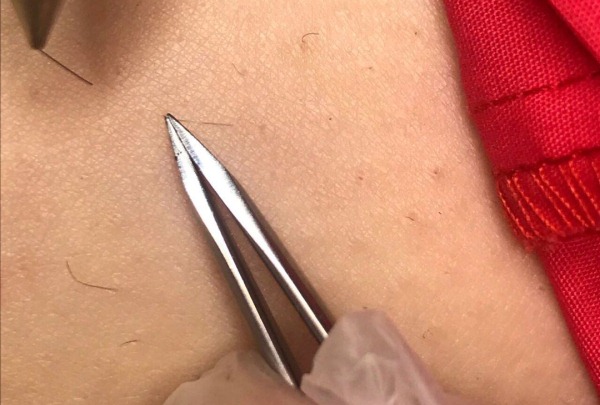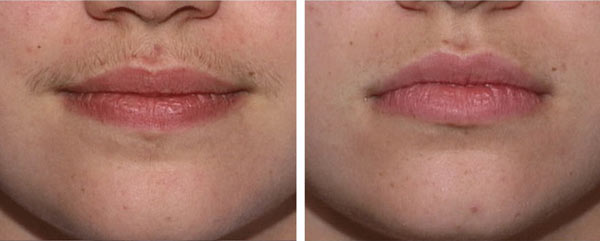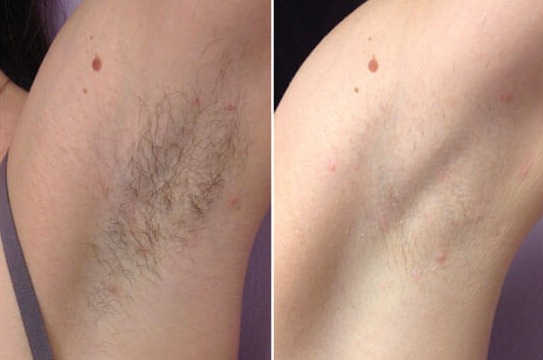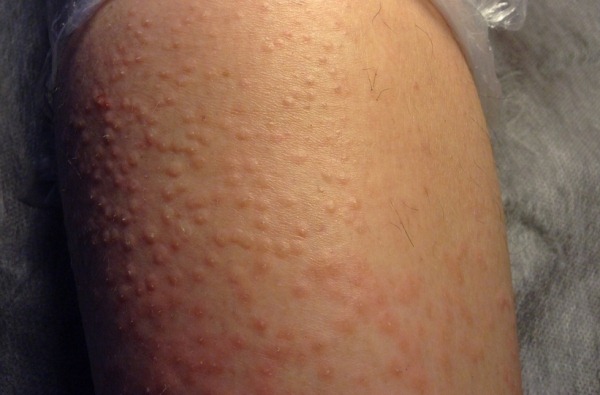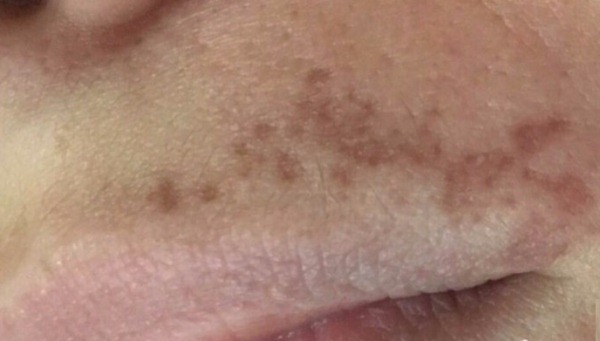One of the popular cosmetic techniques that allows you to permanently get rid of excess hair on the face and body - electrolysis... Despite the high efficiency of the procedure, before the session, you must make sure that there are no contraindications that, if neglected, can cause significant harm to beauty and health.
The essence and method of performing the procedure
Electrolysis (contraindications for the procedure are given below in the article) - is a technique for removing excess vegetation from the body using direct or alternating electric current. The procedure is carried out with an electric epilator with various attachments capable of delivering currents of various strengths.
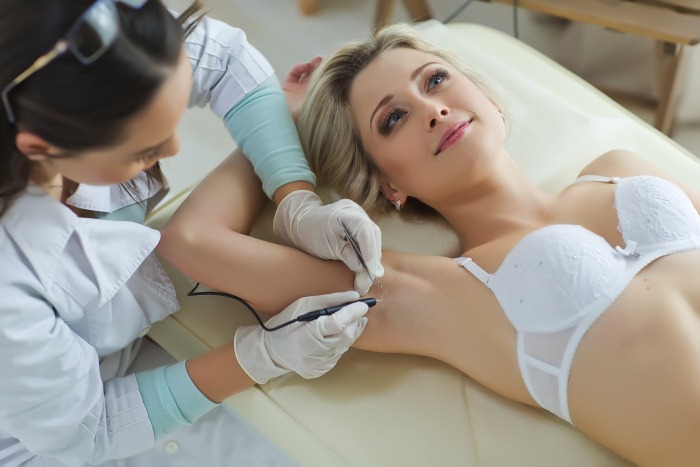
With the help of electrolysis, you can permanently get rid of hair on any part of the body, regardless of its color and length.
Electrodepilation methods:
| Name | Method description | Sensations accompanying depilation | Where can you spend |
| Thermolysis
| A procedure in which a high-frequency alternating current is passed through the hair, heating the root, thereby destroying its structure. | The technique is painful and can cause burns. | Not recommended for sensitive skin. |
| Electrolysis | It uses direct current and 2 electrodes to destroy the hair with converted sodium ions. | A painless and fast method recommended for all parts of the body. | All over the face and body. |
| Blend | Combination of thermolysis and electrolysis, in which high frequency and alternating current can be applied simultaneously. | A painful method that makes it difficult to remove rounded follicles. May cause burns if carefully handled. | It is not advisable to use in the bikini area and in the armpits. |
| Sequential blend | A variation of the blend method that allows the use of a low pulse current. | ||
| Flush | A high-frequency current is used, which is passed only through the hair root. | Less painful than thermolysis and blend. | Approved for use on the whole body. |
| Sequential Flash | The fastest type of thermolysis, which has a detrimental effect on any structure of the hairline. |
Method effectiveness
Electrolysis (the client must inform the doctor about contraindications to the procedure before the start of the session) allows you to permanently get rid of excess hair on the face and body of both women and men.
The treatment procedure for the 1st zone takes from 30 minutes. up to 10 hours and requires alternate work with each hair. For the convenience of the client, each session can be divided into several parts, allowing for the treatment of each centimeter of the body in turn.
It is possible to completely remove excess vegetation only after 4-10 sessions, since only 10-15% of the hair in the active growth phase is removed in one procedure.After 2-3 weeks, electrolysis on the treated area is repeated, destroying new, awakened follicles.
Required number of sessions:
| Zone | Number of sessions |
| Eyebrows | 2-3 |
| Cheeks | 3-5 |
| The chin | 4-6 |
| Dark hair located above the upper lip | 4-5 |
| Armpits | 5-8 |
| Legs, hips | 8-10 |
| Back and loin | 8-9 |
| Bikini | 7-20 |
Men need a longer time to get rid of excess vegetation, since the hair on their body is more dense.
Types of electrolysis
There are 2 types of electrolysis:
- Tweezers. During the session, a device with a tweezers-shaped attachment grabs the hair, passing an electric current through it. The technique is practically painless, suitable for treating sensitive skin in the armpits and bikini areas, but it takes a very long time.
- Needle. A disposable needle made from a specific alloy is inserted into the hair follicle, heats the root and destroys the bulb. Several types of needles are used for this depilation:
- tyflon are used to treat sensitive areas of the body;
- gold - used if there is a tendency to allergies;
- the face area is treated with metal alloy needles.
Contraindications for use
Electrolysis (it is important to clarify contraindications before starting hair removal using electric current) prohibited to people suffering from:
- Acne vulgaris. Aggressive exposure to electric current in case of skin damage can provoke tissue infection.
- Herpes virus, eczema. Processing is allowed only in remission.
- Fungal skin lesions. Requires prior treatment to prevent dangerous side effects.
- Sunburn. In case of reddening of the skin under the influence of UV rays, electrolysis is postponed until the inflammatory process is removed.
- The presence of birthmarks, moles, warts directly at the place of processing. The supply of electric current can injure papillomas and provoke malignant degeneration of cells.
- Scars and cuts. The procedure is performed only on clean skin. At least 1 year should pass from the moment of scar formation.
- Hepatitis, HIV infection. Electrolysis requires increased precautions and is only permissible after obtaining the consent of the patient.
- Diseases of the cardiovascular system (especially a defect, arrhythmia, ischemia, increased blood pressure). Provokes the emergence of serious health problems.
- Asthma. Permission from a pulmonologist is required.
- Varicose veins. Depilation is prohibited only on the damaged area.
- Hemophilia due to the high likelihood of bleeding.
- Diabetes mellitus... Any trauma to the skin can cause infection and suppuration in people with high levels of dextrose in the blood.
- Mental disorders since painful sensations can deliver increased psychological discomfort and exacerbate the disorder.
- Oncology. Electrolysis can worsen the general condition of the patient.
- Epilepsy in connection with provoking the progression of the disease.
Do not perform electrolysis:
- To expectant mothers, since painful sensations provoke the appearance of uterine tone.
- Women who are breastfeeding newborns, because of the danger of harming the health of the mother and baby.
- In the case of the presence of metal parts on the treated areas of the body. Heat causes the piercing to heat up, causing skin burns.
- Persons wearing pacemakers.
Precautions and features of the procedure during pregnancy
Electrolysis is considered a relatively safe procedure that allows you to permanently get rid of excess hair on the face and body.
Despite the desire of the young mother to always remain attractive, the cosmetology clinics of the Russian Federation refuse to carry it out, since Russian gynecologists consider pregnancy one of the main contraindications to the use of a care procedure.
Gynecologists of foreign countries and Russia have different attitudes towards the problem of using the procedure by a woman while waiting for a child. European and American obstetricians, based on sociological studies, declare that thermolysis is considered absolutely safe for pregnant women, and electrolysis is not desirable for depilation of the bikini area from the 3rd semester.
Electrical waves can negatively affect the development of the fetus. Unpleasant sensations from the procedure can provoke an increased uterine tone.
Russian practices are less liberal in this matter, prohibiting the use of electrolysis when fighting excess vegetation during the entire period of waiting for the baby and further, during breastfeeding. This is motivated by the fact that during pregnancy, a woman's hormonal background changes and any, even a previously habitual effect, can cause an unusual reaction.
Electrolysis in different zones
Electrolysis helps remove excess hair from all areas of the body for up to 5 years. After this time, the appearance of new, soft single hairs is possible, but the hairline cannot be completely restored.
Most often, electrolysis is used to eliminate dark "tendrils" that form in women above the upper lip and to correct eyebrows. Carrying out a procedure for cleaning the area of the armpits or bikini requires special care due to the very danger of injury to the lymph nodes close to the skin.
Bikini and armpits
With the help of electrolysis are performed:
- treatment of the armpit area;
- bikini classic, medium, deep and Brazilian.
Electrolysis in this area is accompanied by unpleasant sensations arising from the high sensitivity of the skin, and requires additional use of anesthetics.
When preparing for a session in 2-3 months, it is necessary to stop using any methods of depilation (except for a razor). Elimination of procedures that injure the bulbs is necessary to restore hair follicles and their rapid destruction by electric current.
During preparation, 2 days before the session, you should:
- do not visit the solarium;
- refuse to shave hair;
- stop taking birth control pills and blood thinners.
Procedure progress:
- Treatment of the bikini or underarm area with a cleansing gel and anesthetic.
- Carrying out anesthesia. Anesthetic ointments, ultracaine sprays or subcutaneous injections may be required depending on the client's sensitivity threshold.
- Processing. The client sits on the couch and picks up the neutral electrode. The doctor connects the device and begins to gradually cleanse the body of interfering hair. To completely eliminate excess vegetation in the bikini area, it is necessary up to 10 hours. Complete treatment is usually divided into zones that take 3-5 hours. The armpits are cleaned in 1-2 hours.
- Lubrication of the depilated area with an antiseptic.
For 1 session, it is possible to remove 15% of all vegetation in the growth or dying phase. For a complete cleansing of the bikini area, you will need from 10 to 20 procedures carried out with an interval of 30 days. The armpits are treated in 2-3 sessions, 1-2 hours each. Break between procedures 2-3 weeks.
On the face
Electrolysis allows you to permanently get rid of vegetation on the cheeks, forehead, antennae above the lips. Also, the technique can be used to correct eyebrows.
Procedure:
- Cleansing the area to be treated with tonic or spray.
- Application of an anesthetic gel or administration of anesthesia.
- Placing the client on a couch with a neutral electrode in hand.
- Hair treatment.On the face, the procedure takes 15-40 minutes.
- Applying a disinfecting lotion.
Complete cleansing of the face requires 2 to 4 sessions carried out with a difference of several days.
| Region | Number of sessions | Duration of one treatment, min. |
| Forehead | 3-4 | 20-40 |
| Eyebrows | 1-2 | 15 |
| Antennae above the upper lip | 4-5 | 25 |
| The chin | 4-6 | 40 |
Potential consequences and complications
Electrolysis (the client's contraindications, taken into account before the procedure, will help to avoid unpleasant health problems and a difficult rehabilitation period) should be performed only in a salon or a blade by an experienced master using disposable materials. For several days after the session, the client may experience the following symptoms.
Itching
The desire to comb the treated area is the most common problem with which patients turn to a specialist. The onset of itching is associated with the use of an electric current that irritates the skin. The problem disappears on its own after 1-2 days and, if it occurs, it can be easily stopped after taking sedatives and antihistamines.
To help prevent itching:
- Treatment of the pro-depilated area with chlorhexidine and a solution of calendula with trichopolum.
- Exclusion of water ingress on injured skin within 3 days after depilation.
- Weekly refusal to take baths, saunas and swimming pools. It is only allowed to take a contrast shower.
- Take a break from sports training.
- 2 week sun avoidance.
In no case should you comb the treated area due to the danger of infection and the formation of bleeding wounds.
Soreness
Epilation is a very painful procedure that requires the use of pain relievers during and after the session. Within 2-4 days, from the moment of completion of the treatment, the painful sensations completely disappear, and until disappearance are stopped by the use of anesthetic ointments, sprays or antispasmodics.
Pinpoint hemorrhage
After the procedure, small blood clots appear at the site of hair removal, caused by the reaction of tissues to aggressive influences. The side effect is especially noticeable on sensitive skin in the bikini area and underarms.
Puncture sites should be treated with disinfectants to help exclude infection: lubricate with Panthenol or Bepanten ointment, which promote rapid tissue regeneration.
Change in pigmentation
Small age spots in the depelling area occur if the recommended rules are violated after procedural care or prolonged exposure to UV rays.
The second reason for the occurrence of pigmentation is the self-tearing of crusts from healing wounds.
Scarring
Scarring of the tissue is possible if the doctor violates the technique of the procedure, or it may appear as a reaction of the skin to scratching the pro-depilled area.
Ingrown hair
Folliculitis is a common side effect after electric depilation, resulting from the destruction of the bulb by current. Thinning hair curls and grows into the skin layer, provoking an inflammatory process.
Invasiveness
Infection of the treated area is possible if:
- use of non-sterile instruments during depilation;
- neglecting the stage of skin cleansing before the procedure;
- violations of the rules of rehabilitation care.
To avoid getting an infection, in particular, it is forbidden to comb the depilated area and peel off the formed crusts.
Redness and swelling
The appearance of redness and swelling after electric depilation is considered a normal reaction of the body to hair removal. Unpleasant symptoms disappear on their own within 1-2 days after the procedure.
Care after electrolysis
Side effects can be avoided by following the rules of rehabilitation care.
So, after electric depilation, it is prohibited:
- Be in the sun.Do not sunbathe for 2 weeks before and after the procedure to prevent the appearance of hyperpigmentation. In the case of electric depilation on the face for 14 days, you should lubricate the treated area with sunscreen with a high SPF factor.
- Scratching the skin because of the danger of infecting, provoking scarring and bleeding.
- Use alcohol-based lotions for body care. Such products are very dry to the skin and harmful to damaged tissues.
- Visit saunas, baths, swimming pools for 2 weeks after depilation.
It is allowed to wash on the 3rd day from the moment of electrolysis, but only under the shower and without the use of detergents. Damaged skin should be washed at least 3 times daily with a disinfectant solution, and then applied to the skin with panthenol ointment or moisturizer. To quickly relieve swelling, ice is allowed to be applied to the inflamed areas.
It is strictly forbidden to remove or comb the crusts formed at the site of the bruise. Otherwise, it is possible to provoke scarring or infection.
Despite the extensive list of contraindications, electrolysis is considered one of the most effective modern methods to permanently solve the problem of excess vegetation. The correct approach to the procedure, adherence to all the rules of rehabilitation care will help to make the skin smooth, and the body well-groomed and seductive.
Video about the results of electrolysis
How to care for your skin after electrolysis:


